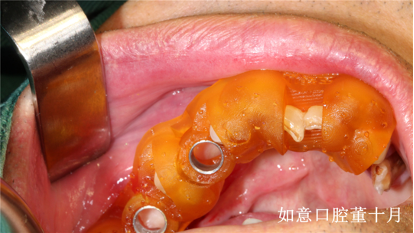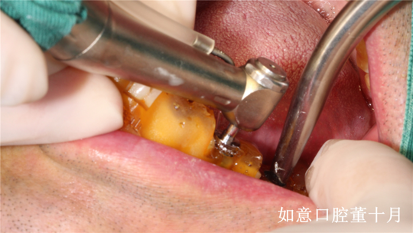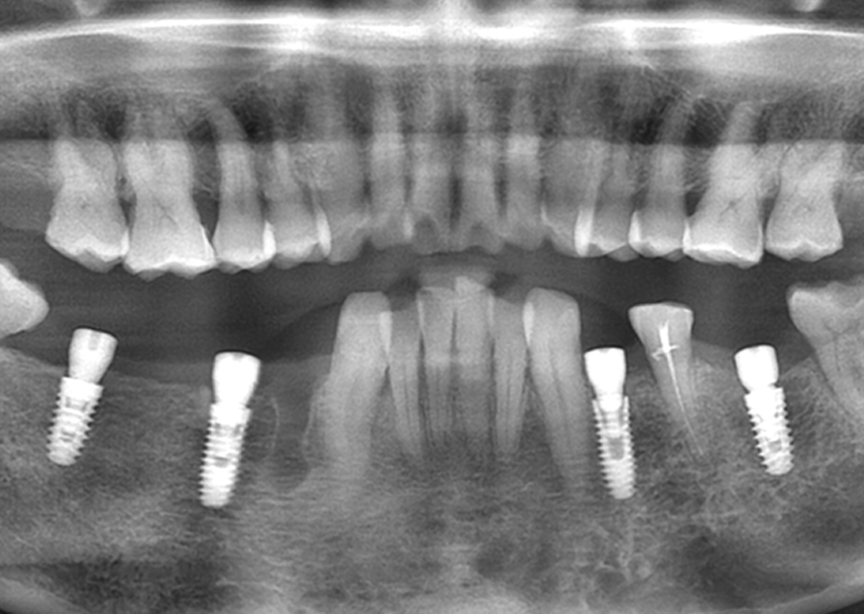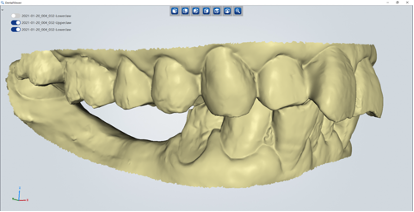This case study describes the various steps of an implant surgery with surgical guide, aided by 3D scanning and 3D printing.
Introduction
With the development of digital implant technology, using intraoral scanning to produce custom-fit surgical guides is gaining popularity. In implant surgery, the accuracy and efficiency can be improved by printing the personalized surgical guide that consistent with patient’s intraoral condition according to the intraoral data.

Patient information
The patient had both sides of their lower posterior teeth missing for 4 years. The CBCT showed that their #44 root canal had: high-density ray blocking substance, low-density shadow in the root tip, and complete absorption in the labial bone wall of the root. #45 top of the ridge had a 1mm-diameter residual root, and #45, #47, #34, #36 width of alveolar ridge was moderate.
Workflow of the implant surgery
Obtain the digital impression
Acquire intraoral data with Aoralscan for the subsequent surgical guide design.
Treatment plan
Place implant with 4.8*10 in tooth position #36, #47 according to the actual bone mass. Due to sufficient vertical bone mass, implants with 4*12 & 4.3*12 will be placed in tooth position #34, #45. After surgery, #44 (residual root) will be extracted for delayed implant placement.

Design surgical guide
The software-generated surgical guide is indivisible, and the span of the guide is large, which is difficult to position. Therefore, the guide will be segmented into 2 parts by a third software. This will make it easier for the surgeons to remove the guide during the operation.

Print surgical guide
Print surgical guide with dental 3D printer AccuFab.

Implant surgery







Postoperative CT examination

Due to the irregular shape of the alveolar ridge, the absorption of labial bone on #34, insufficient width of alveolar ridge and uneven bone density at the implant bed area, in addition, the patient has a certain degree of mouth opening limitation, manual operation may lead to poor orientation and affect the final restoration. With the help of surgical guide, the orientation and depth can be precisely controlled and, more importantly, it’s minimally invasive and it can also reduce the operation time and the fear of patient in the process of surgery.
 ENG
ENG












